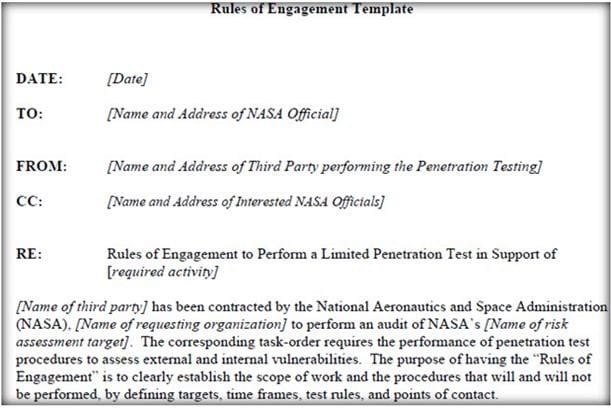Exam Details
Exam Code
:ECSAv8Exam Name
:EC-Council Certified Security Analyst (ECSA) v8Certification
:EC-COUNCIL CertificationsVendor
:EC-COUNCILTotal Questions
:200 Q&AsLast Updated
:Aug 10, 2025
EC-COUNCIL EC-COUNCIL Certifications ECSAv8 Questions & Answers
-
Question 131:
Which of the following statement holds true for TCP Operation?

A. Port numbers are used to know which application the receiving host should pass the data to
B. Sequence numbers are used to track the number of packets lost in transmission
C. Flow control shows the trend of a transmitting host overflowing the buffers in the receiving host
D. Data transfer begins even before the connection is established
-
Question 132:
Which of the following will not handle routing protocols properly?
A. "Internet-router-firewall-net architecture"
B. "Internet-firewall-router-net architecture"
C. "Internet-firewall -net architecture"
D. "Internet-firewall/router(edge device)-net architecture"
-
Question 133:
What is a goal of the penetration testing report?
A. The penetration testing report helps you comply with local laws and regulations related to environmental conditions in the organization.
B. The penetration testing report allows you to sleep better at night thinking your organization is protected
C. The pen testing report helps executive management to make decisions on implementing security controls in the organization and helps the security team implement security controls and patch any flaws discovered during testing.
D. The penetration testing report allows you to increase sales performance by effectively communicating with the internal security team.
-
Question 134:
Which of the following is the range for assigned ports managed by the Internet Assigned Numbers Authority (IANA)?
A. 3001-3100
B. 5000-5099
C. 6666-6674
D. 0 ?1023
-
Question 135:
From where can clues about the underlying application environment can be collected?
A. From the extension of the file
B. From executable file
C. From file types and directories
D. From source code
-
Question 136:
Which of the following information gathering techniques collects information from an organization's web-based calendar and email services?
A. Anonymous Information Gathering
B. Private Information Gathering
C. Passive Information Gathering
D. Active Information Gathering
-
Question 137:
Which of the following is not a characteristic of a firewall?
A. Manages public access to private networked resources
B. Routes packets between the networks
C. Examines all traffic routed between the two networks to see if it meets certain criteria
D. Filters only inbound traffic but not outbound traffic
-
Question 138:
The IP protocol was designed for use on a wide variety of transmission links. Although the maximum length of an IP datagram is 64K, most transmission links enforce a smaller maximum packet length limit, called a MTU.
The value of the MTU depends on the type of the transmission link. The design of IP accommodates MTU differences by allowing routers to fragment IP datagrams as necessary. The receiving station is responsible for reassembling the fragments back into the original full size IP datagram.
IP fragmentation involves breaking a datagram into a number of pieces that can be reassembled later. The IP source, destination, identification, total length, and fragment offset fields in the IP header, are used for IP fragmentation and reassembly.

The fragment offset is 13 bits and indicates where a fragment belongs in the original IP datagram. This value is a:
A. Multiple of four bytes
B. Multiple of two bytes
C. Multiple of eight bytes
D. Multiple of six bytes
-
Question 139:
Application security assessment is one of the activity that a pen tester performs in the attack phase. It is designed to identify and assess threats to the organization through bespoke, proprietary applications or systems. It checks the application so that a malicious user cannot access, modify, or destroy data or services within the system.

Identify the type of application security assessment which analyzes the application-based code to confirm that it does not contain any sensitive information that an attacker might use to exploit an application.
A. Web Penetration Testing
B. Functionality Testing
C. Authorization Testing
D. Source Code Review
-
Question 140:
Rules of Engagement (ROE) document provides certain rights and restriction to the test team for performing the test and helps testers to overcome legal, federal, and policy-related restrictions to use different penetration testing tools and techniques.

What is the last step in preparing a Rules of Engagement (ROE) document?
A. Conduct a brainstorming session with top management and technical teams
B. Decide the desired depth for penetration testing
C. Conduct a brainstorming session with top management and technical teams
D. Have pre-contract discussions with different pen-testers
Related Exams:
112-51
EC-Council Certified Network Defense Essentials (NDE)212-055
Sun Certified Programmer for the Java 2 Platform.SE 5.0212-77
EC-Council Certified Linux Security212-81
EC-Council Certified Encryption Specialist (ECES)212-82
EC-Council Certified Cybersecurity Technician (C|CT)212-89
EC-Council Certified Incident Handler (ECIH)312-38
EC-Council Certified Network Defender (CND)312-39
EC-Council Certified SOC Analyst (CSA)312-40
EC-Council Certified Cloud Security Engineer (CCSE)312-49
ECCouncil Computer Hacking Forensic Investigator (V9)
Tips on How to Prepare for the Exams
Nowadays, the certification exams become more and more important and required by more and more enterprises when applying for a job. But how to prepare for the exam effectively? How to prepare for the exam in a short time with less efforts? How to get a ideal result and how to find the most reliable resources? Here on Vcedump.com, you will find all the answers. Vcedump.com provide not only EC-COUNCIL exam questions, answers and explanations but also complete assistance on your exam preparation and certification application. If you are confused on your ECSAv8 exam preparations and EC-COUNCIL certification application, do not hesitate to visit our Vcedump.com to find your solutions here.